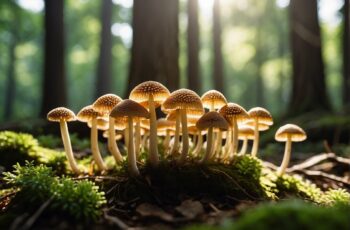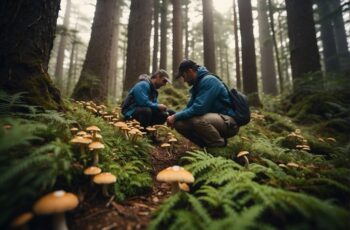Growing your own morel mushrooms, with their distinctive honeycomb appearance and earthy flavor, can be both a rewarding and challenging endeavor. As a mushroom enthusiast or an avid gardener, you’re embarking on an adventure that requires a good grasp of Morchella, the genus of morels. These edible fungi are highly prized by chefs and foragers alike and cultivating them at home allows you to enjoy their unique flavor right from your own backyard.
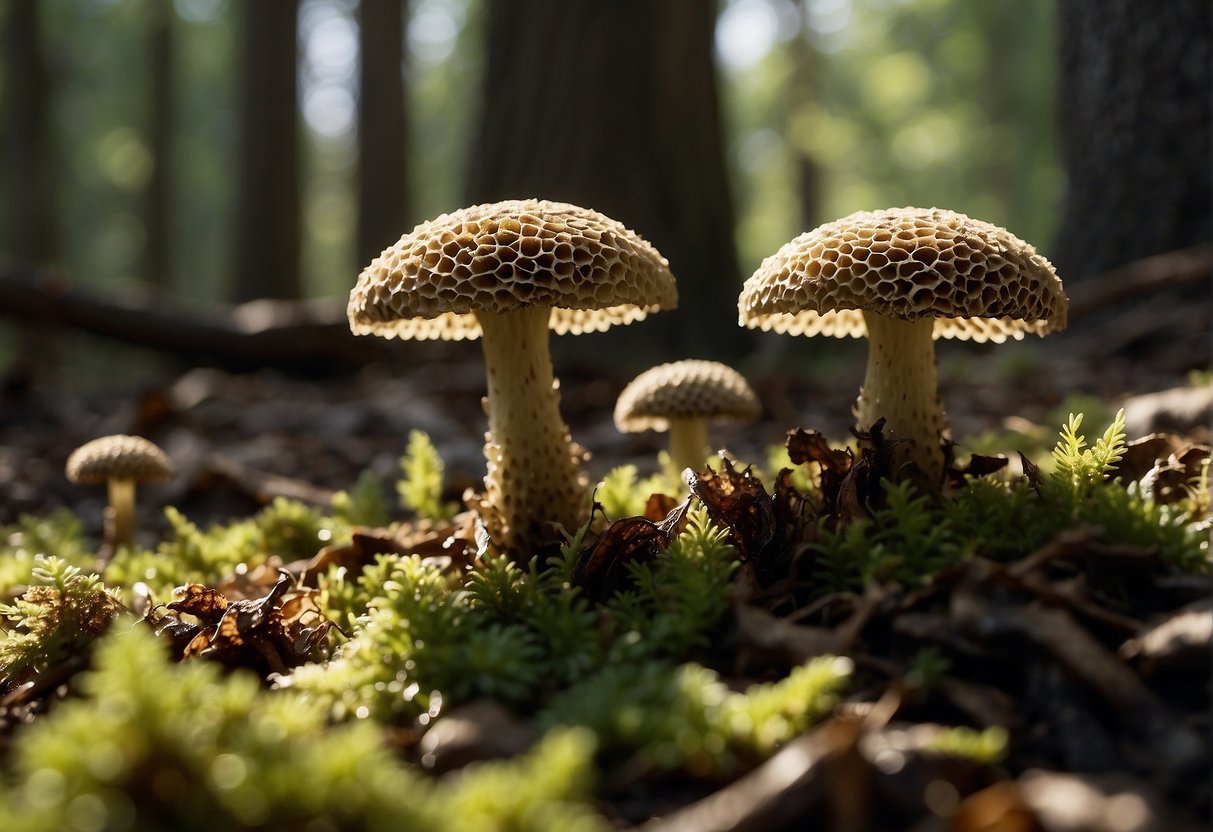
The process of growing morels begins with understanding their natural habitat and replicating these conditions as closely as possible. Morels thrive in cool, moist environments and are often found in woodland areas amongst certain types of trees like elms, ashes, and old apple orchards. While replicating their preferred conditions can seem daunting, with the right approach and patience, you can foster the growth of these culinary treasures.
Key Takeaways
- Cultivating morel mushrooms brings home the joys of foraging and gourmet cooking.
- Morels require specific conditions, mimicking their natural woodsy habitat for success.
- Patience and careful attention to the cultivation process reward you with edible delights.
Understanding Morels and Their Habitat
Before venturing into the world of morel cultivation or foraging, knowing the intricacies of their lifecycle and habitat is essential. These aspects shape how you’ll interact with these prized fungi.
The Lifecycle of Morels
Morels belong to the genus Morchella, and exhibit a fascinating lifecycle that’s tied closely to environmental conditions. In the spring, when the soil and air temperatures are just right, morels begin to emerge. The spores from mature morels are carried by wind or animals onto the forest floor, where they germinate and form a network of cells (mycelium) underground. The mycelium remains dormant until the conditions are right for the morels to fruit and become the mushrooms you are familiar with.
Optimal Growing Conditions
You’ll find morels flourishing in deciduous forests with rich soil and good moisture. They often share a symbiotic relationship with trees, particularly the ash, elm, oak, and apple. Morels are also known to appear after forest fires, as the nutrient-rich ash creates an ideal bed for their growth. The forest floor should not be too wet or dry, with decaying wood, leaf litter, and high humidity serving as markers for potential morel hotspots.
Identifying True Morels and False Morels
As you scour the forest, you must discern between true morels and false morels—the latter can be toxic. True morels have a honeycomb appearance, with the cap and stem connected at the base of the cap. False morels may resemble their edible counterpart but will have a cap that hangs freely from the top of the stem. Exercise caution and when in doubt, refer to an experienced morel forager. Remember, morels are wild fungi, and it’s this untouched, natural environment that gives them the unique, rich flavor you seek.
Preparing for Cultivation
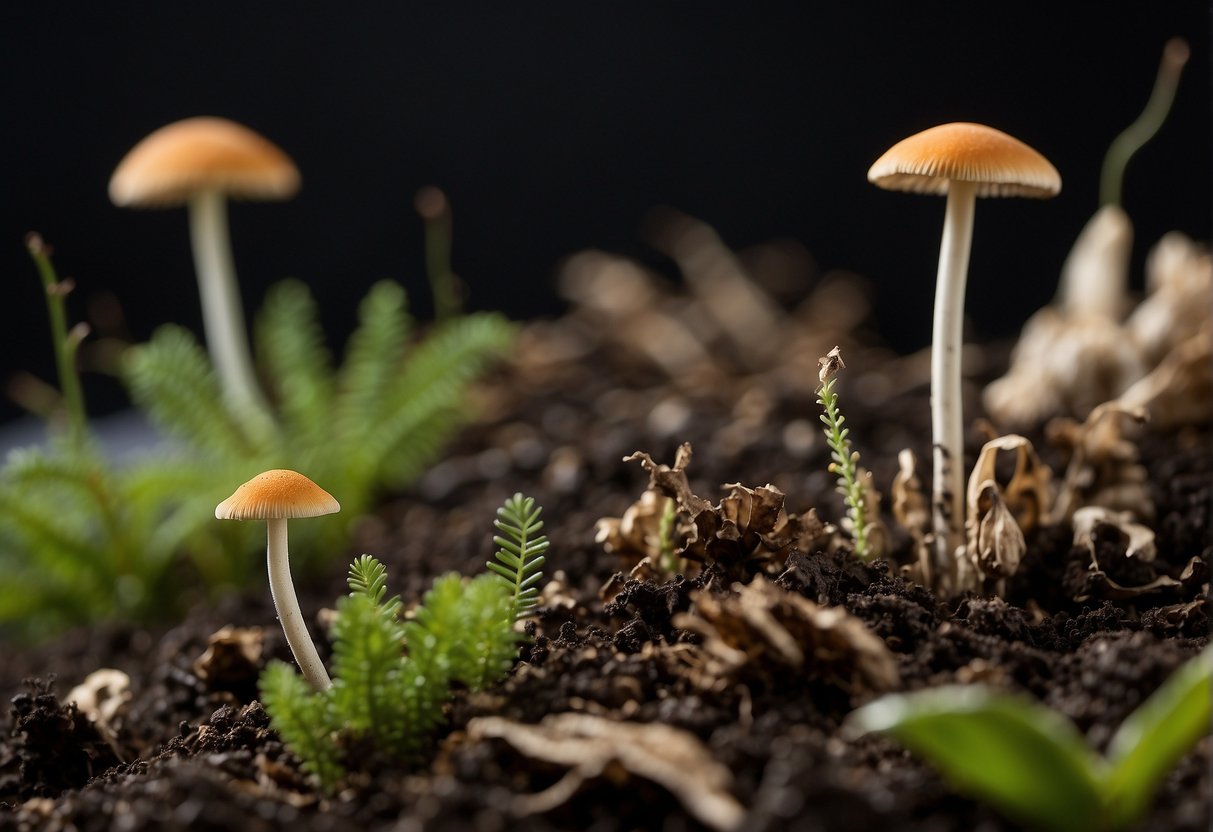
Before diving into the world of morel mushroom cultivation, you need to set a solid foundation. Here’s how to select the ideal substrate and tailor the environment for maximum morel success.
Choosing the Right Substrate
Your morel mushroom bed is the cornerstone of successful cultivation. Think of it as the rich, nutritious earth where your morels will flourish. Opt for a mix of organic materials such as wood chips, sand, and compost. Morels have a particular fondness for loamy soil, which mimics their natural woodland habitat. This soil should be well-aerated and bolstered with nutrients. For a well-balanced substrate, blend in peat moss, which helps retain moisture, and gypsum to add calcium and sulfur. Keep an eye on the pH level; morels thrive in neutral to slightly alkaline conditions.
Creating a Conducive Environment
Now that your substrate is ready, let’s talk about your growing environment. Morels are quite particular about their conditions. Aim for a temperature sweet spot around 60 to 70 degrees Fahrenheit, avoiding extreme heat or cold. Light is less of an issue, as morels don’t require much direct sunlight, but do ensure a shady, covered area to protect them.
Next up is moisture and humidity – your morel mushrooms need these in abundance. However, beware of overwatering; maintain damp but not waterlogged soil. To support a high humidity environment, consider incorporating a misting system or keep the area naturally damp. Covering the mushroom bed with organic matter like leaves can help maintain the necessary moisture levels. Regular checks are crucial; your dedication to monitoring and balancing these elements can mean the difference between a bountiful harvest and a barren plot.
Growing Morels from Spores to Harvest
When embarking on the journey of growing morel mushrooms, you’re taking on a rewarding challenge that conjures the sense of foraging in your very own garden. From planting the spores to the joy of harvesting, this section will explore the key steps for success.
Planting and Care
To start your morel cultivation, create a spore slurry by mixing molasses and non-chlorinated water, then add your collected morel spores. The slurry increases the chance of germination when spread over your chosen garden site. For substrate, morels thrive in soils enriched with wood ash and require consistent moisture for the mycelium to develop. Make sure to plant in an area with ample shade to simulate their natural habitat.
- Mix 1 tablespoon of molasses with 1 gallon of water to create your spore slurry.
- Spread the slurry over a soil mix containing wood ash and sawdust or grain substrates.
Common Challenges in Morel Cultivation
Pests and diseases can disrupt morel growth, so keep a close eye and maintain a sterile environment as much as possible. Variations in watering can also be an issue; therefore, it is crucial to mimic the forest floor’s consistent moisture levels. Morels need specific conditions to fruit, and creating this environment might require trial and error, patience, and attentiveness.
- To prevent pests and diseases, use rainwater or filtered water for irrigation.
- Ensure a sterile substrate by pasteurizing sawdust or grain before use.
Harvesting and Storing Morels
Your patience pays off when the fruiting bodies emerge. Harvest by carefully cutting the morels at their base to prevent disturbing the underlying mycelium. For storing, black morels, in particular, should be enjoyed fresh or dehydrated for later use. Remember, the key to a successful harvest is gentleness to allow for future growth.
- Harvest morels when they are fully matured, but before they begin to deteriorate.
- Store fresh morels in the refrigerator for a few days or dehydrate for long-term storage.
Growing morels from spores to harvest is a delicate art, and while it might be more complex than other forms of mushroom cultivation, the taste of home-grown morels is incomparable. Keep these practices in mind and your garden will soon yield these sought-after delicacies.
Foraging and Culinary Uses of Morels
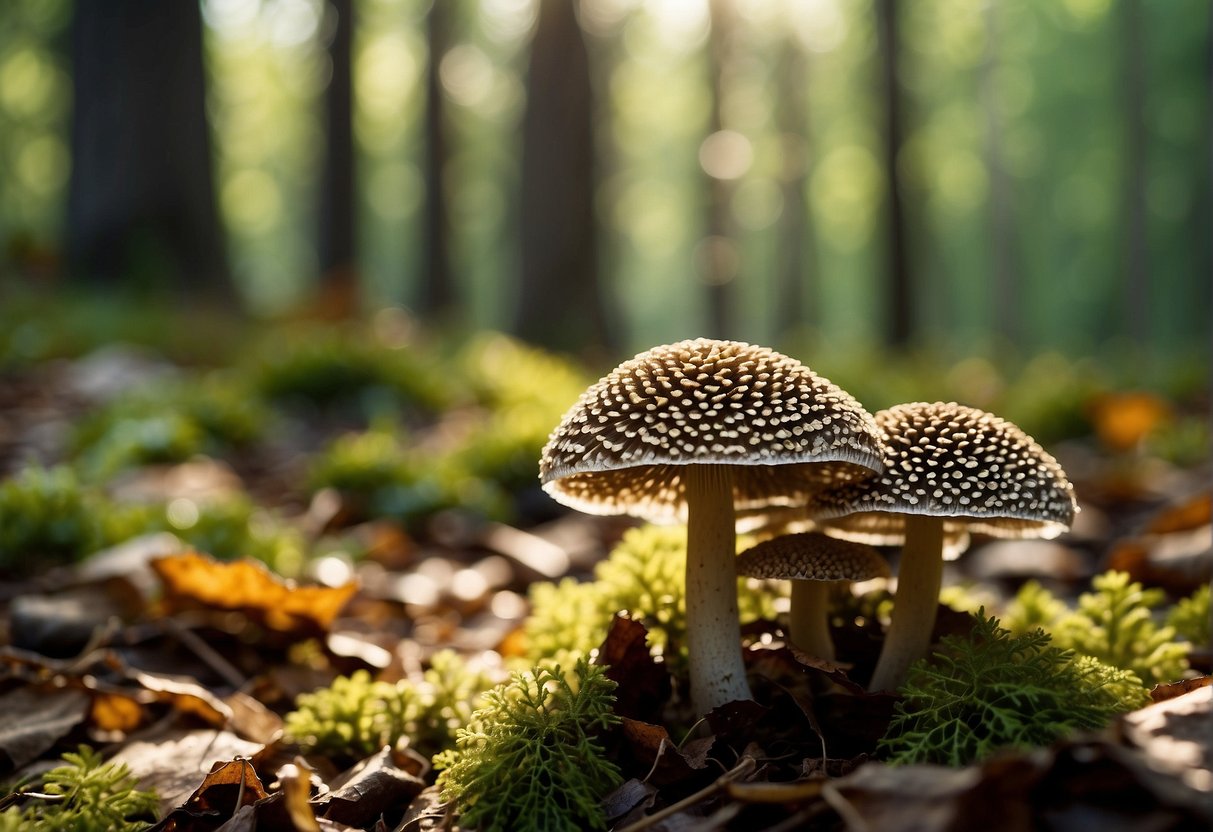
Morels, a true delicacy of the forest floor, offer both a unique foraging experience and a gourmet addition to your culinary creations. These mushrooms are a prize find for any mushroom hunter due to their earthy flavor and health benefits, including vitamins, minerals, and antioxidants.
Tips for Sustainable Foraging
When foraging for morels, safety and sustainability are paramount. These mushrooms typically grow in woodland areas and are especially drawn to places that have been affected by forest fires. Here are some focused tips for a successful forage:
- Educate Yourself: Learn to distinguish morels from toxic look-alikes, such as gyromitra.
- Timing is Key: The best time to hunt is in spring, when soil temperatures reach the 50s (F).
- Care for the Habitat: Stick to established trails to protect the forest floor and avoid overharvesting.
- Obtain Permission: Always forage in areas where you have secured permission or know that foraging is allowed.
Forest Ecosystems: Familiarize yourself with morels’ preferred growing conditions near hardwood trees such as ash, elm, or oak in both Europe and North American forested areas.
Incorporating Morels into Recipes
Morels’ distinctive flavor elevates any dish. To maximize their potential in your kitchen, remember the following:
-
Preparation:
- Rinse them thoroughly to remove any forest debris.
- Sautéing in butter or oil unlocks their rich flavor.
-
Recipe Ideas:
- Enhance pastas, risottos, or soups with minced morels.
- Complement meats, like steak or chicken, with a morel sauce.
Additional Considerations:
- Never consume raw morels: Cooking neutralizes their mildly toxic compounds.
- Pairing: Earthy morels pair well with herbs, cream, and white wine, bringing a gourmet touch to even the simplest meals.
By following these tips and incorporating these culinary practices, you’ll make the most of your morel discovery.

